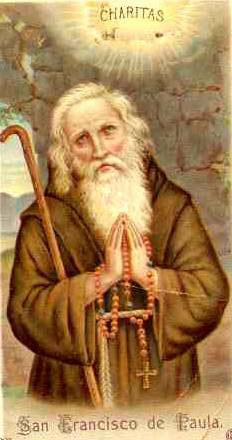 Dear readers, Catholic Online was de-platformed by Shopify for our pro-life beliefs. They shut down our Catholic Online, Catholic Online School, Prayer Candles, and Catholic Online Learning Resources essential faith tools serving over 1.4 million students and millions of families worldwide. Our founders, now in their 70's, just gave their entire life savings to protect this mission. But fewer than 2% of readers donate. If everyone gave just $5, the cost of a coffee, we could rebuild stronger and keep Catholic education free for all. Stand with us in faith. Thank you. Help Now >
Dear readers, Catholic Online was de-platformed by Shopify for our pro-life beliefs. They shut down our Catholic Online, Catholic Online School, Prayer Candles, and Catholic Online Learning Resources essential faith tools serving over 1.4 million students and millions of families worldwide. Our founders, now in their 70's, just gave their entire life savings to protect this mission. But fewer than 2% of readers donate. If everyone gave just $5, the cost of a coffee, we could rebuild stronger and keep Catholic education free for all. Stand with us in faith. Thank you. Help Now >
Juan Maria Salvatierra
FREE Catholic Classes
Born at Milan, 15 November, 1648; died at Guadalajara, 17 July, 1717. His family was of Spanish origin, the name being written originally Salva-Tierra. While pursuing his studies at the Jesuit college of Parma, he accidentally came across a book upon the Indian missions. It so impressed him that he at once determined to give his life to the same work, although his parents had destined him for marriage with a lady of high rank. Receiving the habit of the Jesuit Order in Genoa, he sailed for Mexico in 1675, and on arriving in that country continued his theological studies for a time, after which he was assigned to a professorship in the college of Puebla. Declining a position in the cathedral, he received permission to devote himself to the conversion of the Indians and, in June, 1680, set out for the still unconquered and defiant Tarumari (q.v.) in the wild mountain defiles of south-western Chihuahua. Among these, and their neighbours, the Tubar, Guazaar, and others, he laboured for ten years, establishing or having charge of several missions, baptizing whole bands, winning the affection of the wild tribes, and, alone, holding them quiet when all around were in murderous revolt. In 1690 he was appointed visitador or inspector of the Jesuit missions of the north-western district. Soon afterwards, through conversations with the missionary explorer, Father Eusebio Kino , he conceived an intense desire for the evangelization of Lower California, for which undertaking official authority was finally granted in 1697, all expense to be at the cost of the missionaries. In the organization and later conduct of the work his chief collaborator was Father Juan Ugarte. The contributions for this purpose, by generous donors, formed the basis of the historic fondo piadoso , or Pious Fund, of California, for so many years a subject of controversy with the republican government of Mexico.
With one small boat's crew and six soldiers Salvatierra landed 15 October, 1697, at Concepción Bay, on the coast of the peninsula, and a few days later founded the first of the California missions, which he dedicated to Our Lady of Loreto, his special patroness through life. For a time he acted as priest, captain, sentry, and cook, besides studying the language from a vocabulary prepared by an earlier Jesuit visitor. Father Juan Copart, and from natives who could be induced by presents to come near. In the course of the next few years he founded six missions, successfully overcoming all difficulties. He also made some important explorations. In 1704, being summoned to Mexico, he was appointed provincial, but when accepting the office requested that he might soon again be permitted to take up his mission work. This was granted; in 1707 a successor was appointed, and Father Salvatierra returned to his mission charge, where he remained until summoned in 1717 to Mexico to confer with the new viceroy. Despite a painful infirmity he set out, but the fatigue so aggravated his disorder that he was obliged to stop at Guadalajara, to which place he insisted on being carried in a litter rather than turn back. Says the Protestant historian Bancroft: "It was thus that the apostle of California made his last earthly journey. For two long months he tossed upon his deathbed, suffering extreme agony. Then, feeling that his end was near, he summoned the faithful Bravo to his side, confided to him the particulars of mission affairs, and empowered him to represent California at the capital. On the 17th July, 1717, he died, as he had lived, full of hope and courage. The whole city assembled at his funeral, and the remains were deposited amidst ceremonies rarely seen at the burial of a Jesuit missionary, in the chapel which in former years he had erected to the Lady of Loreto. Salvatierra's memory needs no panegyric. His deeds speak for themselves; and in the light of these, the bitterest enemies of his religion or of his order cannot deny the beauty of his character and the disinterestedness of his devotion to California." His most important writings are: "Cartas sobre la Conquista espiritual de California" (Mexico, 1698); "Nuevas Cartas sobre lo mismo" (Mexico, 1699); and his "Relaciones" (1697-1709) in "Documentos para la Historia de Mexico" (4th series, Mexico, 1853-7).
Join the Movement
When you sign up below, you don't just join an email list - you're joining an entire movement for Free world class Catholic education.

-

- Stations of the Cross
- Easter / Lent
- 5 Lenten Prayers
- Ash Wednesday
- Living Lent
- 7 Morning Prayers
- Mysteries of the Rosary
- Litany of the Bl. Virgin Mary
- Popular Saints
- Popular Prayers
- Female Saints
- Saint Feast Days by Month
- Pray the Rosary
Pope Francis’ April Prayer Intention: Using Technology to Strengthen Human Connections
Finding Peace Through Prayer in a World of Worry
Trump Administration Withholds Federal Grants from Planned Parenthood Over DEI and Civil Rights Concerns
Daily Catholic
 Daily Readings for Wednesday, April 02, 2025
Daily Readings for Wednesday, April 02, 2025 St. Francis of Paola: Saint of the Day for Wednesday, April 02, 2025
St. Francis of Paola: Saint of the Day for Wednesday, April 02, 2025 Prayer for God's Help in Daily Actions: Prayer of the Day for Friday, March 14, 2025
Prayer for God's Help in Daily Actions: Prayer of the Day for Friday, March 14, 2025 Daily Readings for Tuesday, April 01, 2025
Daily Readings for Tuesday, April 01, 2025 St. Hugh of Grenoble: Saint of the Day for Tuesday, April 01, 2025
St. Hugh of Grenoble: Saint of the Day for Tuesday, April 01, 2025- To Perceive Animals as God's Gifts: Prayer of the Day for Thursday, March 13, 2025
![]()
Copyright 2025 Catholic Online. All materials contained on this site, whether written, audible or visual are the exclusive property of Catholic Online and are protected under U.S. and International copyright laws, © Copyright 2025 Catholic Online. Any unauthorized use, without prior written consent of Catholic Online is strictly forbidden and prohibited.
Catholic Online is a Project of Your Catholic Voice Foundation, a Not-for-Profit Corporation. Your Catholic Voice Foundation has been granted a recognition of tax exemption under Section 501(c)(3) of the Internal Revenue Code. Federal Tax Identification Number: 81-0596847. Your gift is tax-deductible as allowed by law.


 Daily Readings for Wednesday, April 02, 2025
Daily Readings for Wednesday, April 02, 2025 St. Francis of Paola: Saint of the Day for Wednesday, April 02, 2025
St. Francis of Paola: Saint of the Day for Wednesday, April 02, 2025 Prayer for God's Help in Daily Actions: Prayer of the Day for Friday, March 14, 2025
Prayer for God's Help in Daily Actions: Prayer of the Day for Friday, March 14, 2025 St. Hugh of Grenoble: Saint of the Day for Tuesday, April 01, 2025
St. Hugh of Grenoble: Saint of the Day for Tuesday, April 01, 2025

